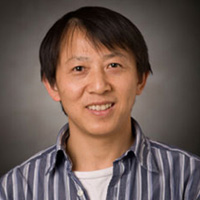 Abstract: Rechargeable batteries function by reversible ion shuttling between the electrodes through the electrolytes. However, large amount, high rate ion diffusion and insertion induces large deformation in constituent materials in battery cells, leading to material failure, and consequently irreversible capacity decay and poor cyclability. How do mechanics and electrochemistry reciprocally influence one another in battery charge-discharge cycling? How might the mechanics-electrochemistry coupling be harnessed and regulated for energy storage and energy harvesting, and how might it be unharnessed and dysregulated in battery degradation? These questions have been stimulating new understandings at the interfaces of mechanics, materials, and electrochemistry. In this talk I will highlight a set of exciting electro-chemo-mechanical phenomena, enabled by advanced in-situ transmission electron microscopy and rationalized by multiscale, multiphysical modeling. Emphasis will be placed on the fundamental principles of mechanics and electrochemistry that underlie materials, designs, and devices.
Abstract: Rechargeable batteries function by reversible ion shuttling between the electrodes through the electrolytes. However, large amount, high rate ion diffusion and insertion induces large deformation in constituent materials in battery cells, leading to material failure, and consequently irreversible capacity decay and poor cyclability. How do mechanics and electrochemistry reciprocally influence one another in battery charge-discharge cycling? How might the mechanics-electrochemistry coupling be harnessed and regulated for energy storage and energy harvesting, and how might it be unharnessed and dysregulated in battery degradation? These questions have been stimulating new understandings at the interfaces of mechanics, materials, and electrochemistry. In this talk I will highlight a set of exciting electro-chemo-mechanical phenomena, enabled by advanced in-situ transmission electron microscopy and rationalized by multiscale, multiphysical modeling. Emphasis will be placed on the fundamental principles of mechanics and electrochemistry that underlie materials, designs, and devices.
Biographical Sketch: Dr. Sulin Zhang received his PhD from the Department of Engineering Mechanics, University of Illinois, Urbana-Champaign in 2002. He then worked as a postdoctoral fellow in Northwestern University. He is currently a Professor in Department of Engineering Science and Mechanics and Department of Biomedical Engineering at Penn State University. Dr. Zhang’s research has been focused on the roles of mechanical forces and stresses in materials, biology, chemistry, and medicine. He is the recipient of the Early Career Development Award from National Science Foundation in 2007, the PSEAS Outstanding Research Award in 2016 from Penn State. Dr. Zhang is severing as an Associated Editor for Extreme Mechanics Letters, and an editorial board member for Nature Partner Journal-Computational Materials.